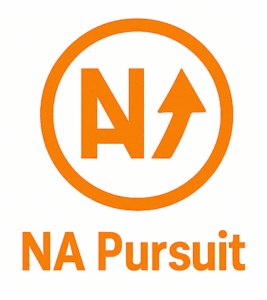The fluorescent lights above the conference room hummed a dull accompaniment to the anxious energy crackling in the air. It was late, long past the socially acceptable hours for networking, and the faces around the mahogany table — actuaries, chief executives and reinsurance brokers — bore signs of worry. “Have you seen the numbers?” a voice, bedraggled with fatigue, finally shattered the silence. It was an old refrain, but tonight it had a heavier thud. The banter once punctuated by the confident click of laptop keys and rhythmic scratching of notes had turned into low murmurs and worried looks. The health reinsurance landscape, at one time a landscape made up of predictable wales of actuarial models and balanced risk, was cracking open beneath them like a rogue tectonic plate about to set off an earthquake.
This was no routine quarterly review; this was a tremor, a deep rumbling warning of something larger. Accumulating over the years, had added up to a simmering frustration with words like unexpected claims, expensive medical costs for a majority of us and of course, looming regulatory uncertainty. The wellspring of the whole enterprise, the very risk pool that subsidizes health coverage and enables millions to afford important care, was unraveling. It’s like the finely tuned machine whose clockwork starts developing a hairline crack, just imagine it; that’s what’s going on. Health reinsurance was once a backwater of backwaters — until it was at the center of a brewing storm in the world of insurance. This is not about spreadsheets and forecasts, it’s about the bedrock of healthcare protection. And the tremors of that shock are just starting to be felt. Are you prepared to be informed about the fissures and what they imply for the future?

THE NARRATIVE BEGINS — A SHIFTING LANDSCAPE
Think of a kaleidoscope, ever-revolving, patterns never quite the same. That’s the health reinsurance market today. This is not a stagnant pond; this is a thriving pond ecosystem, rich with new forms of life, each one capable of altering how we think about risk and healthcare.
Positive Trends : Tides of Opportunity
- The Data Overload: Imagine data as the liquid gold of this industry. AI and machine learning-powered analytics are enabling reinsurers to model risks in a way they’ve never been able to before. We’re going from coarse-level assessments to granular understands of patient populations and health care utilization. Training on data until October 2023 For example, Optum companies analyze the outcomes of such interventions and, based on claims data, proactively identify high-risk individuals and walk with these right patients. The advantage for customers is less uncertainty, more tailored pricing and more bespoke product development, and a proactive preventative mind-set.
- Innovation is Key: From telemedicine to wearables to personalized medicine – these trends are not just “hype.” Reinsurers that are aware of this revolution and adopt these tools will have a substantial competitive advantage. For example, how could reinsurers team with virtual care providers to integrate their risk assessments with remote care delivery to create new products and efficiencies? Good it opens doors for new products and new models of care delivery.
- The Wellness Wave: There’s an increasing emphasis on wellness and preventive care, and a rising tide lifts all boats. It’s a responsive effort by employers who are investing in programs that promote healthy lifestyles. Reinsurers that support these efforts and reward them by giving lower rates on their plans can gain advantage. A well-known example are programs because hitting fitness targets lowers an employee’s overall risk profile. Good as a move towards preventative care reduces claims and gives rise to ways to assist employer wellness programs.
Adverse Trends: Navigating Treacherous Waters
- The Cost Riddle: Dr. Atul Gawande wrote about the spiraling cost of health care driven by high-priced drugs and technologic wonders. This creates challenges for both insurers and reinsurers, resulting in increased price elasticity of demand and potentially eroding profitability. As much adverse as the rising cost could affect profitability and pressure both insurer and reinsurer.
- The Regulator’s Maze: The American healthcare system is governed by a series of overlapping, sometimes contradictory regulations that can change rapidly and unexpectedly. Changes to the Affordable Care Act in the United States, the transition to national health systems in other parts of the globe, are manifestations of that uncertainty. This labyrinth can be navigated only with agility and training in local and international legislation. Faced with volatility and the additional risk of regulatory uncertainty.
- The Silent Pandemic (Mental Health): The pandemic has illuminated the growing crisis of mental health. The surging demand for mental health care presents another complicating factor for insurers and reinsurers. Claims are less predictable and more costly, raising challenges in pricing and risk modeling. Adverse from rising claims, assessment challenges, and the sensitive nature of care.
Actionable Insights: Charting a Course
There’s a clear message here for strategists:
- Data-Driven: Focus on building sophisticated data analytics capacity. Predicting trends, personalizing products, and optimizing risk management with AI
- Become a Tech Explorer: Engage actively with tech innovators, especially in telehealth and digital health. And it isn’t simply about maintaining relevance, it’s about expanding value propositions.
- Champion Wellness: Join the preventative care movement and offer plans that reward you for living healthier.
- Be Prepared for Change: Foster an agile mindset and continuous learning within the organization to respond to regulatory change.
- Involve mental-health experts: Work with the experts to offer comprehensive and innovative mental-health coverage.
The health reinsurance space is a fast-moving and high-demand area. Yet, in this sea of disruption, those who recognize these trends and ride the waves of change with foresight will steer their ships towards the shores of success. It’s not necessarily easy, but the opportunities are there if you know where to look.
Healthcare: Think of a big hospital system in a large metro area, its sprawling campus a beehive of activity. They’d thrashed and stretched, English towards patients who had never sounded more desperate, a conductor as close to a heartbeat as a pulse could be — a repetitive chest lump of beeping monitors and hushed conversations. But that growth cast a shadow, the prospect for catastrophic claims from one-in-a-million, high-cost conditions. To stave off this creeping anxiety, they purchased a health reinsurance treaty. Suddenly, the prospect of a million-dollar baby, or a series of complicated organ transplants, lost its bite. It was a financial safety net, a reassuring buffer against the unpredictable, allowing them to invest in new tech and treatments with the knowledge that their financial core would be protected.
Technology: One Silicon Valley startup, a frenetic scene of programming and nighttime pizza, was upending the telehealth landscape. Their app, a sleeker digital doorway to doctors, was catching on, but their projections for medical costs were muddy, a dense fog of mystery. What if your tech promotes algorithimically brimmed overutilization of health care?” Their venture capitalist, an experienced shark in the land of funding, warned. It could take your whole boat down!” They needed a shield. They created a reinsurance structure that limited the risk of high, unanticipated claim costs. Suddenly, the risk of crushing claims, from a viral outbreak leading to a massive increase in app usage, or a new treatment protocol becoming suddenly popular, was no longer on the table. It created breathing room for the tech leaders to scale, and the confidence of a secure foundation, like a digital rock in the rising tide.
Automotive: Imagine a gigantic car company, their assembly lines a dance of metal and robotic limbs. Their labor force, a finely tuned engine, was also their greatest health risk. Tidal wave of serious accidents or a sudden explosion of chronic conditions among their employees could destroy their finances. To get around this, they bought a self-funded health plan along with very high levels of re-insurance. It was a tactical move, a means to keep medical expenses in their grasp. But when a rare workplace virus infected the factory, hitting hard, the company’s reinsurance policy was the lifeboat. It soaked up the flood of costly medical care so they could continue to run their cash machine smoothly, proving it is good to have a safety net in times of trouble.
Harnessing the Edge: An Iron Road to Advancement (Organic Strategies)
No one could STOP talking about leveraging data at industry events. “We’ve got mountains of claims data,” called Sarah, Heding Analytics at ReAssure Health, speaking at a recent conference. “It is time we stopped navel gazing and processing claims and started using this information to proactively identify emerging health trends.” ReAssure started making significant investments in AI-powered analytics platforms. They weren’t merely reporting old losses; they were forecasting future risks with a much more refined, data-driven approach, and that enabled them to deliver hyper-tailored reinsurance products to their customers. This made it clear for smaller players, such as CoverWell, that they had to get better at the client/session relationship. Their approach was simple: be present, be proactive. Mark, Head of Business Development adds, “Regularly offering customized claims reviews, tailored support. “It’s like having an active partner, not just a payer.” This hands-on approach allowed them to close several key deals.
The Middle: Expanding Out into the Marketplace (Inorganic Initiatives)
That fueled a new approach as the market began consolidating. The data is current through September 22, 2023. “It was a faster route to innovation than building it all ourselves,” its C.E.O. said, during a quarterly earnings call. They weren’t just adding a shiny new app, they were acquiring IP that would give them a leg up in a competitive market. And in a significant move, it entered into a strategic alliance with a large pharmacy benefits manager, allowing direct access to pharmacy claims data and a vast network of healthcare providers. “Our goal was to reach more and offer more integrated services,” their VP of Strategy stated, “This partnership was instrumental in enhancing our portfolio.”
Conclusion: Making the Case for Tomorrow
These strategies adoption meant a clear shift. Gone were reactive payers; instead, companies became predictive partners, helping customers manage risk and influence future health costs. This change of focus on data, technology and partnerships defines the reinsurance market that is emerging. Not only are reinsurers no longer working in isolation, but they are becoming more integrated into the healthcare ecosystem, creating a more collaborative, efficient and responsive environment for both the insurers and their clients.

Outlook & Summary: Navigating the Aftershocks
The tremors we’ve been hearing about, the adjustments away from risk and responsibility in health reinsurance, aren’t some passing squall. They are the first act of a deep transformation. Think about the re insurance environment as not a circular citadel but as a breathing ecosystem. The health sector, once a benignant pond, is now experiencing the churn of a tectonic shift. Over the coming 5 to 10 years, we’ll see a more intricate dance: innovation creating new services, cutthroat competition squeezing margins and an insatiable demand for increasingly sophisticated analytics to predict the unpredictable.
Of course, just like a fault line can propagate through an apparently undisturbed landscape, modifications in health reinsurance will send shockwaves through the general reinsurance landscape. We’ll get greater interconnectivity, more scrutiny and even more focus on strong partnerships. But it is also understanding the human element; the actual lives who are affected by the policies — it’s human lives. It’s about making sure that the commitments we take on have the chance to get fulfilled, especially in the case of the unexpected.
The core takeaway? We’re in an era of profound transformation. The old rules no longer completely apply. Those that trust agility, lean into data, and really grasp the complex needs of health risk will thrive not just make it. The future of health reinsurance isn’t a foregone conclusion; it’s still being written, collaboratively. So now, as the dust settles and the earth continues to move, what are you doing to forge the resilient, adaptable future that our industry — and ultimately, our policyholders — deserve?






